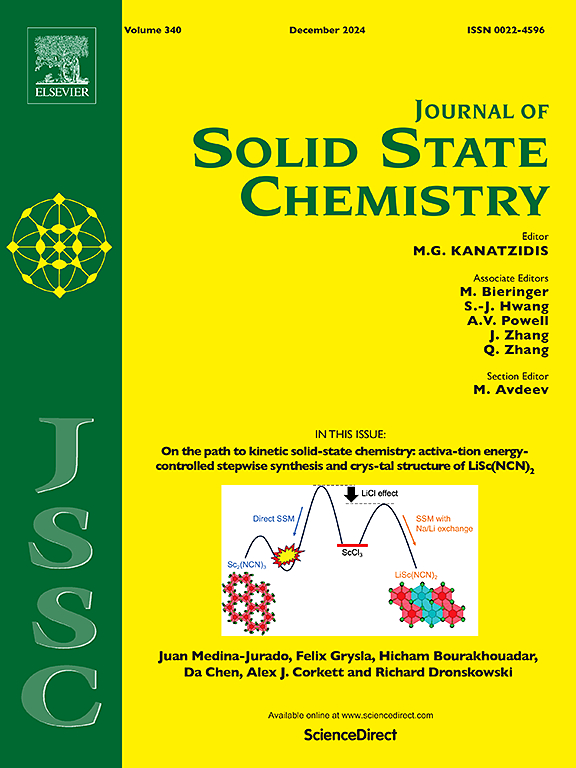Mn2O3/V2O5取代对硼钒酸钙锰玻璃化学耐久性、介电性能和电学性能的影响
IF 3.5
3区 化学
Q2 CHEMISTRY, INORGANIC & NUCLEAR
引用次数: 0
摘要
在本研究中,采用熔融淬火工艺制备了不同Mn2O3浓度的CaO-B2O3-V2O5-Mn2O3体系玻璃样品。这项工作的主要目的是研究这些玻璃材料的化学耐久性和介电性能,突出了V2O5/Mn2O3取代的影响。在去离子水、盐酸和氨水中的化学耐久性测试表明,用Mn2O3代替V2O5提高了化学耐久性。由于玻璃基体内部结构的变化,高浓度V2O5的存在大大改善了介电性能。CBVM1 (25% V2O5)和CBVM2 (20% V2O5)样品的介电异常归因于玻璃化转变。电导率测量表明所研究的玻璃具有半导体性质,而活化能值随着Mn2O3含量的增加而略有增加。电学结果表明,所研究的玻璃是具有电子和离子导电性的混合导体。本文章由计算机程序翻译,如有差异,请以英文原文为准。

Effect of Mn2O3/V2O5 substitution on the chemical durability, dielectric and electrical properties of calcium-manganese borovanadate glasses
In this research study, glass samples belonging to the CaO–B2O3–V2O5–Mn2O3 system with different Mn2O3 concentrations were prepared using the melt-quenching process. The main aim of this work is to investigate the chemical durability and dielectric properties of these glassy materials, highlighting the influence of the V2O5/Mn2O3 substitution. Chemical durability tested in deionized water, hydrochloric acid and ammonia revealed that replacing V2O5 with Mn2O3 improves chemical durability. The presence of V2O5 in high concentrations considerably improves dielectric properties, as a result of structural changes within the glass matrix. CBVM1 (25 % V2O5) and CBVM2 (20 % V2O5) samples showed a dielectric anomaly attributed to the glass transition. Electrical conductivity measurements indicated the semiconducting nature of the glasses studied, while activation energy values showed a slight increase with increasing Mn2O3 content. The electrical results lead to conclude that the studied glasses are mixed conductors with both electronic and ionic conductivity.
求助全文
通过发布文献求助,成功后即可免费获取论文全文。
去求助
来源期刊

Journal of Solid State Chemistry
化学-无机化学与核化学
CiteScore
6.00
自引率
9.10%
发文量
848
审稿时长
25 days
期刊介绍:
Covering major developments in the field of solid state chemistry and related areas such as ceramics and amorphous materials, the Journal of Solid State Chemistry features studies of chemical, structural, thermodynamic, electronic, magnetic, and optical properties and processes in solids.
 求助内容:
求助内容: 应助结果提醒方式:
应助结果提醒方式:


